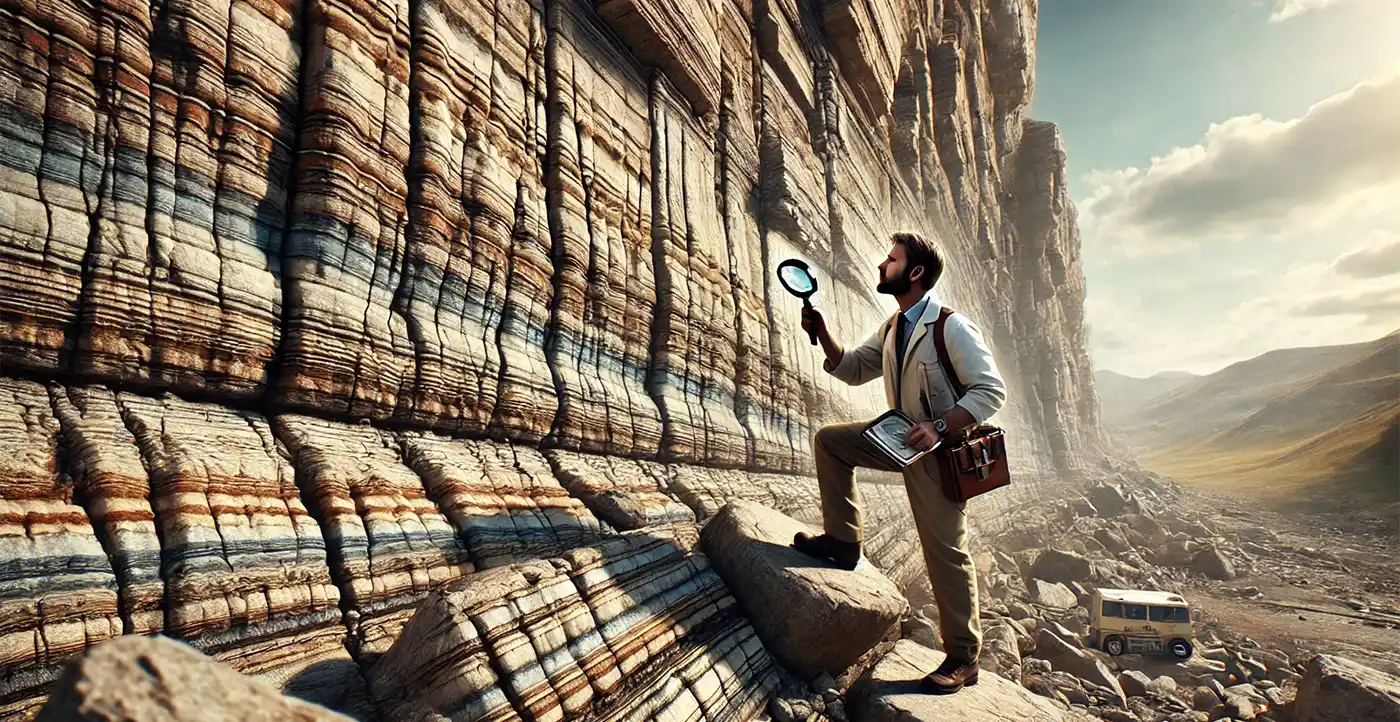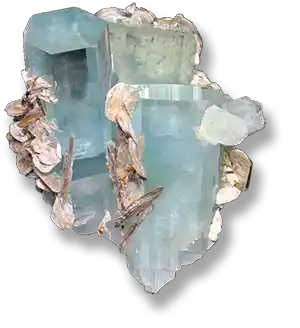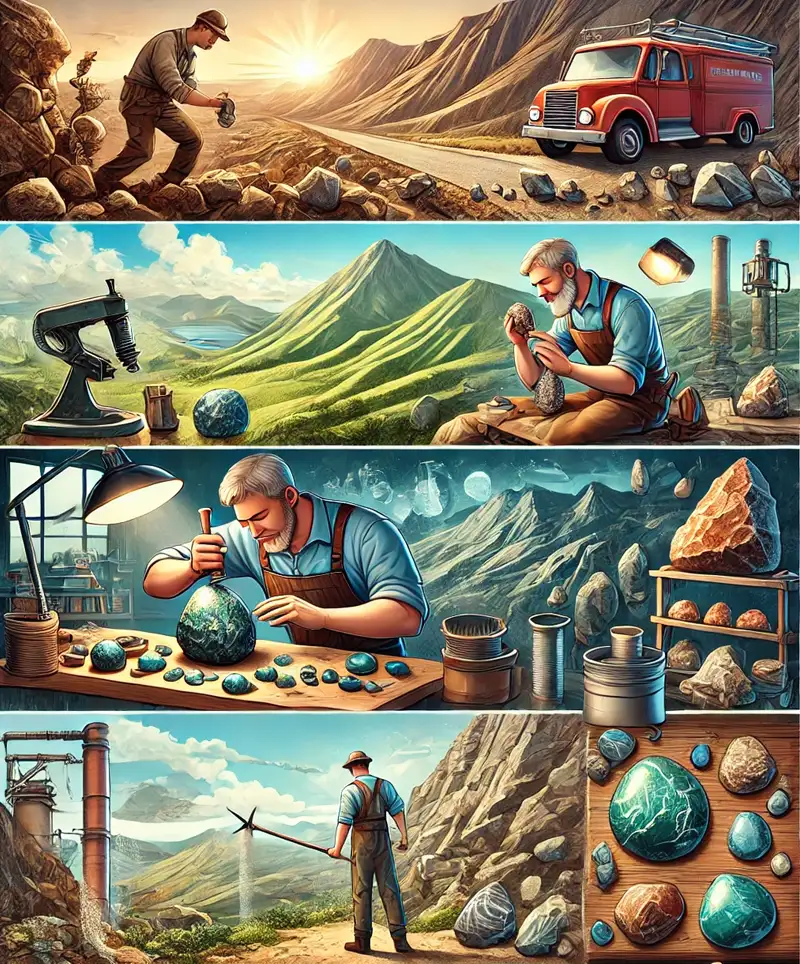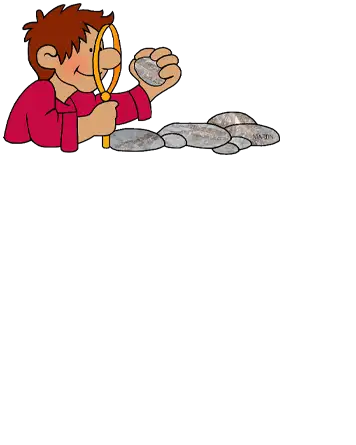Every July 13th, we pause to celebrate a presence so solid it’s almost unmovable: rocks! These chunks of Earth’s crust may seem like mere scenery, but they’re a bedrock of history, art, and science. So, get ready to dig into geology as we explore the surprising, entertaining, and downright “gneiss” world of rocks.
The Foundations of Rock-Loving Civilization
Rocks are more than just things we kick aside on a hike or use to anchor a picnic blanket on a windy day; they are the unsung heroes of Earth’s history. They contain clues about ancient oceans, volcanic eruptions, and even the formation of continents. Rocks have quietly witnessed it all, from the birth of Earth to the rise of human civilization, storing eons of information in their sturdy, layered structures. To get a handle on just how crucial these stony companions are, let’s dig a bit deeper into what makes rocks so significant—and why they’re worth celebrating.
The Time Travelers: Rocks might seem static, but they’re anything but. Each rock is a time capsule, a preserved relic of the conditions in which it formed. Igneous rocks are snapshots of the fiery depths, crystallizing out of magma in underground chambers or on the surface after a volcanic eruption. Sedimentary rocks are like nature’s filing cabinets, recording layers of rivers, oceans, and deserts from millions of years ago. Metamorphic rocks are Earth’s “makeover artists,” formed by heat and pressure deep within the planet, transforming ordinary stones into masterpieces of swirling patterns and unique minerals.
 Think of rocks as a kind of earthy Wi-Fi signal, connecting us with events from the distant past. For geologists, studying rocks is like accessing the world’s most ancient and unabridged library—each rock offering a different chapter of Earth’s tumultuous history.
Think of rocks as a kind of earthy Wi-Fi signal, connecting us with events from the distant past. For geologists, studying rocks is like accessing the world’s most ancient and unabridged library—each rock offering a different chapter of Earth’s tumultuous history.
Rocks in Human Progress: Our love affair with rocks dates back to the very beginnings of human history. Early humans figured out that certain rocks were perfect for shaping tools, sparking the Stone Age. Flint and obsidian were especially prized for their ability to break with sharp edges, making them ideal for cutting and scraping. These stones were essentially prehistoric multi-tools, allowing humans to hunt, build, and survive.
Over millennia, people learned to extract metals from ores found in rocks, moving us into the Bronze Age and eventually the Iron Age. This leap transformed society, enabling more advanced tools, weapons, and even early machines. Rocks literally laid the groundwork for civilization, both by giving us the tools to survive and by providing the materials to build the first villages and cities.
Rocks as Ancient Architects: As human societies grew, rocks became the material of choice for structures that had to last. Early temples, pyramids, and fortresses were made of sturdy stone, a sign of power and permanence. The Egyptians’ iconic pyramids at Giza are a prime example, constructed with limestone and granite blocks weighing up to 80 tons. Meanwhile, the Greeks and Romans famously carved marble and limestone into breathtaking temples, coliseums, and statues. These stone structures were built not just to endure the ages but also to showcase the artistry and innovation of their creators.
Rocks were humanity’s first “skyscrapers”—the materials that allowed us to reach for the heavens and immortalize our stories. They provided a medium to carve inscriptions, record history, and create art. Without rocks, we wouldn’t have the classical architecture we marvel at today, nor the ancient monuments that draw millions of visitors each year.
The Art of Rock: Beyond their utility, rocks have always carried symbolism and beauty. In many ancient cultures, certain stones were considered sacred, even magical. Quartz, for instance, was thought to be frozen ice that would never melt, while jade and turquoise were symbols of royalty and power in Mesoamerican societies. Rocks have been used as amulets, talismans, and markers of status in civilizations across the globe.
Some cultures saw stones as living entities, a belief that survives today among Indigenous peoples in various parts of the world. They viewed specific boulders or mountains as ancestors or protectors, embodying spiritual forces that should be respected. From Stonehenge’s mysterious formation to the carved heads of Easter Island, rocks have always been more than just materials—they’re symbols of human reverence for the natural world.
Rocks in Today’s World: Our connection to rocks might seem less intense in today’s high-tech world, but these geological companions are still essential. The stone that forms our countertops, the concrete in our buildings, the steel in our cars—all of it comes from the ground beneath our feet. Each piece of polished granite or quarried marble continues a tradition of stone-crafting that dates back to ancient times. And let’s not forget the scientific advancements that depend on rare minerals and gemstones sourced from the depths of the Earth.
In a way, rocks have come full circle in our lives. We no longer depend on them for basic survival, but they’re still the foundation of our modern infrastructure, art, and science. From Silicon Valley’s microchips to towering skyscrapers, rocks have gone from Stone Age tools to the silent supporters of our digital and architectural dreams.

A Three-Part Harmony
Geologists divide rocks into three main groups, each with its own origin story:
-
Igneous Rocks: These rocks originate from volcanic “rock stars” deep within Earth’s fiery core. As magma cools, it crystallizes into stones like granite (great for countertops) and basalt (a favorite of volcanoes everywhere). They’re the original rocks—kind of like the Elvis of geology.
-
Sedimentary Rocks: Formed over millions of years, these rocks come from compressed minerals and organic particles. Sedimentary rocks, like limestone, sandstone, and shale, are packed with fossils and stories. Think of them as the social media feeds of ancient ecosystems.
-
Metamorphic Rocks: These rocks have undergone intense “makeovers,” starting as igneous or sedimentary rocks before being transformed by heat and pressure. Slate and marble are well-known metamorphs, proof that even rocks can reinvent themselves when life gets too…sedimentary.
From Tools to Timeless Monuments
Our relationship with rocks isn’t new—humans have been shaping, smashing, and even admiring them since the Stone Age. Here are a few milestones:
-
Stone Age Innovation: Early humans went straight for the rocks when it came to crafting tools, weapons, and basic shelter. Flint, with its sharp edges, was a hot commodity. While no one worried about “designer” stones, these early rock tools were the height of fashion in the Stone Age.
-
Rocky Monuments: Rocks have also made a name for themselves as the skeletons of history. Think the Pyramids of Giza, Stonehenge, and the Colosseum. These structures, built to withstand the test of time, prove rocks were the original “heavy lifters.”
-
Modern Stone Marvels: Today, rocks support our infrastructure in literal and metaphorical ways. From the granite that makes skyscrapers soar to the cement beneath your feet, rocks still serve as the silent heroes of modern civilization.
Unexpected and Fun Rock Facts
Rocks are more than just the scenery on a hike. They’ve got quirks and claims to fame too:
-
Pet Rocks: In the 1970s, the pet rock fad took off. This “ideal” pet didn’t eat, sleep, or bark—essentially, it was a rock in a box with air holes. No maintenance required, proving once again that rocks are low-key but ever-reliable companions.
-
Space Rocks: Meteorites, which are rocks from outer space, are highly valuable. With prices rivaling precious metals, owning one can make you the coolest collector at a dinner party (and definitely the most grounded).
-
Rock Stars: Rocks didn’t miss out on the limelight! Although not geological, rock music shook the world in the 1950s. Bands like The Rolling Stones might not literally rock but share that resilient, solid appeal!
How to Celebrate International Rock Day
If you’re inspired to celebrate rocks in style, here are some ways to get into the spirit:
-
Go Rock Hunting: Grab a geology hammer and venture outside to find some new specimens for your collection. Even if you don’t find diamonds, you’ll walk away with some “solid” memories.
-
Visit a Geology Museum: Check out exhibits that showcase rare and fascinating rocks. Many museums have hands-on displays that will have you saying, “Who knew rocks were this interesting?”
-
Create Some Rock Art: Bring out your artistic side and try painting some rocks. Whether you make smiley faces or recreate a Picasso, painted rocks are fun additions to your garden or a local park.
-
Build a Rock Garden: A rock garden isn’t just pretty; it’s a celebration of geological diversity. Gather rocks from different regions to make a display that shows the world’s rocky wonders.
-
Host a Rock Party: Invite friends over for a rock-themed party. Set the mood with rock music, serve rock candy, and maybe even hold a rock-painting contest. Make it a “solid” get-together to remember!
 From the small pebbles lining a garden path to the mountains shaping our horizons, rocks form the backbone of Earth itself. So, the next time you see a stone on the ground, consider its journey. That tiny pebble might have been part of a mountain or traveled across continents over millions of years!
From the small pebbles lining a garden path to the mountains shaping our horizons, rocks form the backbone of Earth itself. So, the next time you see a stone on the ground, consider its journey. That tiny pebble might have been part of a mountain or traveled across continents over millions of years!
International Rock Day is the perfect opportunity to appreciate these unsung heroes of nature and history. So whether you’re out rock-hunting, admiring famous monuments, or just letting a rock pun roll off your tongue, remember that these rugged companions are far more than scenery—they’re part of the story of life on Earth.
Please Share our Content






 Think of rocks as a kind of earthy Wi-Fi signal, connecting us with events from the distant past. For geologists, studying rocks is like accessing the world’s most ancient and unabridged library—each rock offering a different chapter of Earth’s tumultuous history.
Think of rocks as a kind of earthy Wi-Fi signal, connecting us with events from the distant past. For geologists, studying rocks is like accessing the world’s most ancient and unabridged library—each rock offering a different chapter of Earth’s tumultuous history.
 From the small pebbles lining a garden path to the mountains shaping our horizons, rocks form the backbone of Earth itself. So, the next time you see a stone on the ground, consider its journey. That tiny pebble might have been part of a mountain or traveled across continents over millions of years!
From the small pebbles lining a garden path to the mountains shaping our horizons, rocks form the backbone of Earth itself. So, the next time you see a stone on the ground, consider its journey. That tiny pebble might have been part of a mountain or traveled across continents over millions of years!








 "Sláinte!" is a traditional Irish expression used as a toast, equivalent to "Cheers!" in English.
"Sláinte!" is a traditional Irish expression used as a toast, equivalent to "Cheers!" in English.